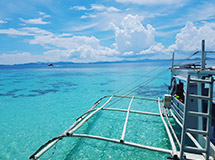
-
МјРЇСІИёСЖШИМі
-
 Malacañang Palace-Official Residence of the Pres
Malacañang Palace-Official Residence of the Pres 139,213
139,213 -
 Amana Water Park
Amana Water Park 115,856
115,856 -
 IFUGAO TRIBE
IFUGAO TRIBE 109,876
109,876 -
 Santacruzan-The Queen of all Filipino Festivals109,700
Santacruzan-The Queen of all Filipino Festivals109,700 -
 Water Refilling Station: an alternative source of drink107,978
Water Refilling Station: an alternative source of drink107,978 -
 LAMBANOG-THE POOR MAN\'S DRINK105,103
LAMBANOG-THE POOR MAN\'S DRINK105,103 -
 Christmas Parol [lantern in English]104,779
Christmas Parol [lantern in English]104,779 -
 HANGING RICE97,509
HANGING RICE97,509 -
 Taoist Temple94,358
Taoist Temple94,358 -
 Corn Fields in the Philippines90,871
Corn Fields in the Philippines90,871


The City of Vigan is a 5th class city in the province of Ilocos Sur, Philippines. It is the capital of the Province of Ilocos Sur. The city is located on
the western coast of the large island of Luzon, facing the South China Sea. It is a World Heritage Site in that it is one of numerous Hispanic towns
in the Philippines, and is well-known for its cobblestone streets, and a unique architecture that fuses Philippine building design, and construction
with colonial European architecture.


Baluarte is another tourist destination in Vigan City.
The City of Vigan's tourist potential is based on its cultural heritage composed of more than 180 ancestral houses, administrative and religious
structures, public squares and other historical landmarks within the poblacion, and built during the 18th and 19th centuries. Being the only surviving
colonial town in the entire Philippines, Vigan is being developed as a primary tourist destination in Region 1.
Vigan is a unique environment in both its natural and man-made features. It is traversed by two river systems namely; Govantes River and
Mestizo River. Its tributaries flow into the Pangada River in Sta. Catalina, Caoayan River in Caoayan, Boquing River in Bantay and the Bantaoay
River in San Vicente.
Unlike other municipalities with towering mountains, Vigan is mostly plains with gently rising hills on the southern portion. Most of its lands are
devoted to agriculture which are located outside of the urban center or poblacion. The coastal plains found along the western side of the city
bounded by the South China Sea are predominantly settled with Mindoro Beach as its location.

Vigan Cathedral:This building is both beautiful and historic. The fighting cock weathervane on top of the bell tower can be seen from almost
everywhere in the city. In this view we see a domed cornice of the cathedral next to the domed bell tower. Unusual architectural features
include the rather odd secondary dome on the bell tower. Like most Filipino bell towers, this one has plants sprouting all over the tower.
The white facade of the catheral faces the main plaza and the provincial capitol. The sides are the standard buttressed "earthquake baroque"
seen in other Filipino churches, finished in unpainted gray with various patterns in cement, again typical of these cathedrals. Like most of
these cathedrals, this one originally had a thatched roof, but that has since been replaced with tin. The cathedral has served as a church,
cathedral, rebel barracks, American barracks, Japanese barracks, American barracks, and is now a cathedral again.
Vigan's buildings were not destroyed during WWII, making it almost unique among Filipino cities. Many of the original Spanish colonial buildings
remain, although most are in poor repair. Vigan has an ongoing restoration and revitalization program to preserve these buildings. The city has
been designated a "World Heritage" site.

Colonial-era house in Vigan City.

Getting There
Via Air
A few airlines fly to Laoag International Airport, such as Cebu Pacific (three times a week) and Philippine Airlines (daily). From there it is a 2 Јі-hour bus ride to Vigan.
Via Land
There are air-conditioned buses that leave Manila from their terminals for Vigan on scheduled runs. Travel usually takes between 8 to 9 hours with stopovers for refreshments along the way. Passengers are required to reserve their seats in advance and in person.
Getting Around
Aside from private transportation (car rentals offer self-driven or chauffeur-driven options), there are two novel ways for tourists to get around in Vigan:
- Tricycles: for a minimum fare within city limits, tricycles are a fun way to get around and visit all the must-see destinations in Vigan.
- Calesa rides: these are horse-drawn buggy rides that are a throwback to colonial days and are the recommended mode of getting around in order to maximize the experience offered by the narrow cobblestoned roads and the antiquated town.

- ЁЄ
- ЁЄ
- ЁЄSalapan Festival
- ЁЄEmpanada Festival (Batac City)
- ЁЄPADUL-ONG FESTIVAL
- ЁЄKaumahan Festival in Barili
- ЁЄKAGASANGAN FESTIVAL
- ЁЄLalin Festival in Asturias
- ЁЄTinabuay Festival
- ЁЄGayon Bicol Festival
- ЁЄPINYASAN FESTIVAL in CAMARINES
- ЁЄMAGAYON FESTIVAL
- ЁЄBANAUAN FESTIVAL (BARANGAY.GUA
- ЁЄThe Tuna Festival in Gensan
- ЁЄPINTOS FESTIVAL BOGO CITY, CEB



- ЁЄ

- ЁЄ
- ЁЄ
- ЁЄCEBU WESTOWN LAGOON
- ЁЄGREEN LAGOON, COMPOSTELA
- ЁЄCALLAO CAVE
- ЁЄMOUNT PINATUBO IN PHILIPPINES
- ЁЄBATAN ISLAND in Batanes.
- ЁЄCALAGUAS ISLAND, CAMARINES NOR
- ЁЄAGHO ISLAND
- ЁЄCARAMOAN ISLAND IN CAMARINES S
- ЁЄSAMBAWAN ISLAND
- ЁЄPLACES TO VISIT IN LANAO DEL N
- ЁЄPLACES TO VISIT IN ZAMBOANGA C
- ЁЄPlaces to visit in Rizal Provi













 ЧЪРкДхФФ ОпАЃЛѓДу ПРЧТ
ЧЪРкДхФФ ОпАЃЛѓДу ПРЧТ 12ГтПЌМг МвКёРкИИСЗ 1РЇ
12ГтПЌМг МвКёРкИИСЗ 1РЇ
 ГЛАд ИТДТ ОюЧаПј УЃБт
ГЛАд ИТДТ ОюЧаПј УЃБт
 ИЎОѓ ЧаБГ ЙцЙЎБт
ИЎОѓ ЧаБГ ЙцЙЎБт
 СжИЛПЁ ГЛАЁ ОЕ КёПыРК?
СжИЛПЁ ГЛАЁ ОЕ КёПыРК? УжАэАЁМККё РЬКЅЦЎ СёБтБт
УжАэАЁМККё РЬКЅЦЎ СёБтБт
 ЧіСіПЁМЕЕ ЧЪРкДхФФ!
ЧіСіПЁМЕЕ ЧЪРкДхФФ! ЧіСіПЁМ АЁДЩЧб
ЧіСіПЁМ АЁДЩЧб









 ЧЪРк ЦЏБо Ч§ХУ! ФСНУОюСі МКёНК
ЧЪРк ЦЏБо Ч§ХУ! ФСНУОюСі МКёНК

































